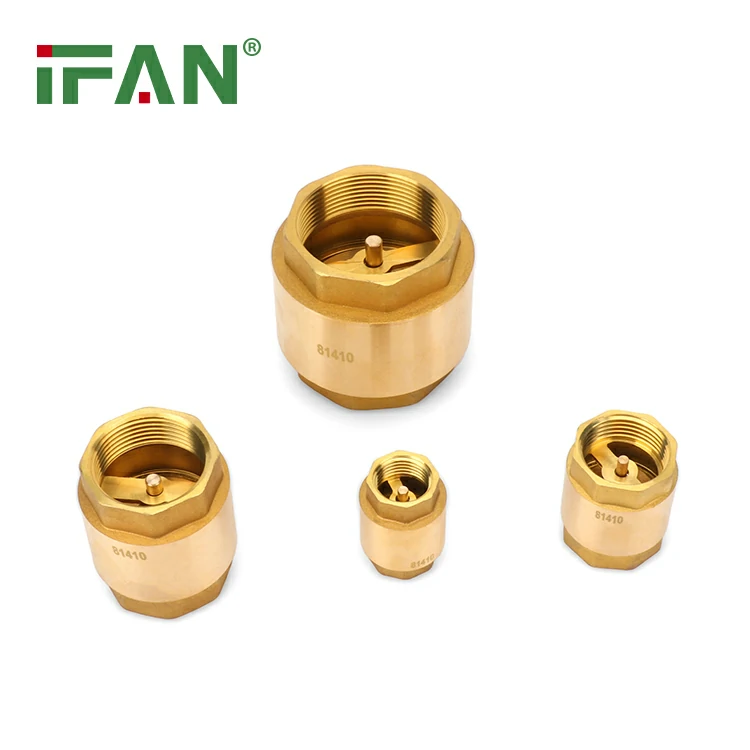A brass check valve is a one-way valve designed to allow fluid (liquid or gas) to flow in one direction only, preventing backflow that could damage equipment or contaminate systems. Here’s a breakdown of how it works:
1. Basic Function & Mechanism
- One-Way Flow Principle: The valve opens when fluid flows in the correct direction and closes automatically when flow stops or reverses.
- No Manual Operation Needed: Unlike gate or ball valves, check valves operate automatically based on fluid pressure.
2. Key Components
A typical brass check valve consists of:
- Brass Body – Resists corrosion and handles high pressure.
- Disc or Ball – The moving part that seals against the seat to block reverse flow.
- Spring (in spring-loaded types) – Ensures quick closing and prevents water hammer.
- Seat – The sealing surface where the disc/ball rests when closed.
- Hinge or Swing Mechanism (in swing check valves) – Allows the disc to pivot open/closed.
3. Types of Brass Check Valves & How They Work
A. Swing Check Valve
- Uses a hinged disc that swings open with forward flow.
- Gravity or backpressure forces the disc shut when flow stops.
- Best for low-velocity applications (e.g., residential plumbing).
B. Spring-Loaded Check Valve
- Uses a spring to push the disc/ball against the seat.
- Opens only when upstream pressure overcomes spring tension.
- Closes instantly when flow stops, reducing water hammer.
- Ideal for high-pressure or pulsating systems (e.g., pumps, compressors).
C. Lift Check Valve
- The disc lifts vertically when flow is present.
- Gravity and backpressure reseat it when flow stops.
- Common in high-pressure industrial systems.
D. Ball Check Valve
- Uses a free-floating ball that moves with flow.
- Simple design, often used in low-pressure applications.
4. How Backflow Prevention Works
- Forward Flow: Fluid pressure pushes the disc/ball open, allowing flow.
- Flow Stops/Reverses:
- In swing check valves, gravity/backflow swings the disc shut.
- In spring-loaded valves, the spring forces immediate closure.
- Tight Seal: The disc/ball presses firmly against the seat, preventing leaks.
5. Common Applications
- Plumbing: Prevents contaminated water from flowing backward.
- Pumping Systems: Protects pumps from damage due to backflow.
- HVAC & Boilers: Maintains directional flow in heating/cooling systems.
- Industrial Processes: Ensures safe fluid handling in chemical/oil systems.
6. Advantages of Brass Check Valves
✔ Durable & Corrosion-Resistant (ideal for water applications).
✔ No External Power Needed – Works automatically.
✔ Low Maintenance – Fewer moving parts than manual valves.
✔ Versatile – Available in multiple designs for different pressures.
Conclusion
A brass check valve ensures unidirectional flow, protecting systems from backflow damage. Depending on the type (swing, spring-loaded, lift, or ball), it operates via fluid pressure, gravity, or spring force, making it essential in plumbing, industrial, and HVAC systems.
View more:https://www.ifanfittings.com/


